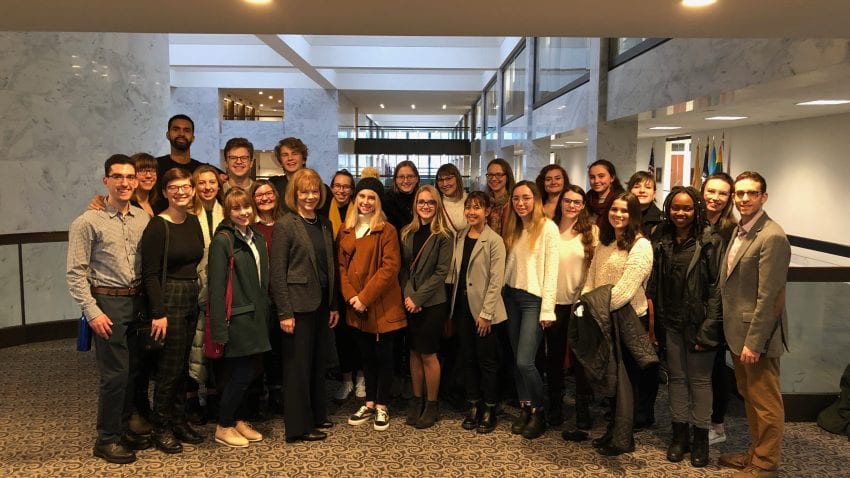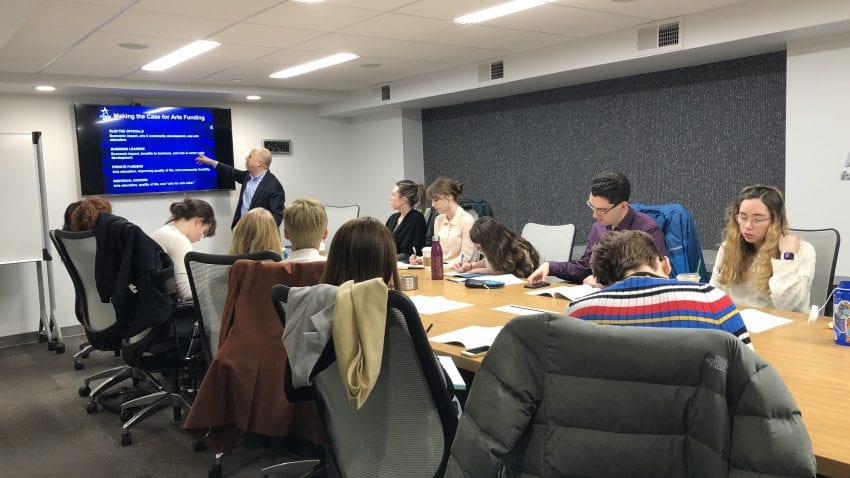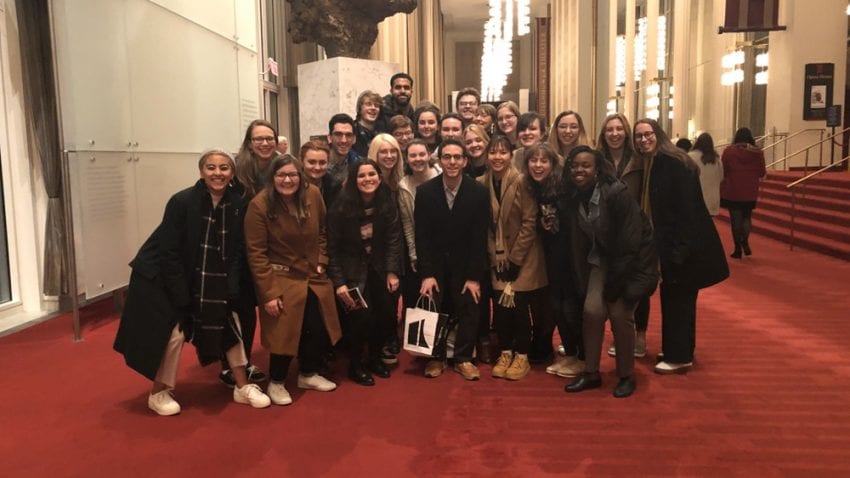At our orientation meeting, one of the first activities we did was a K-W-L (Know, Want to know, Learn) chart. Of course, at that point, we could not complete the L (Learn) row in the chart because we had not left for DC yet, but these were some of my answers to the K (Know) and the W (Want to know) rows:
- I know the definition of democracy based on a political science major perspective
- I know there is widespread abuse of power in world politics
- I want to know to what extent does the US government represent the arts in its constitution
- I want to know how does the US government support the arts
My answers were extremely vague, and at that time I didn’t realize how much of a role the arts play in a democracy. These are some of the things I didn’t know:
- I didn’t know how easy it is to be politically active
- I didn’t know you could call the White House
- I didn’t know about the many career paths I can pursue as a music major
- I didn’t know about the importance of civic engagement
- I didn’t know about the DC riots in 1968
- I didn’t know about how many government-based and non-profit institutions there are that support the arts
- I didn’t know about accessibility in the arts
Fortunately, this past month I had the opportunity to learn about all these things and more.

Our group with Tina Smith
We started our month going on the Attack Adams tour. There we first learned about the history of Black Broadway on University Street. We ended our course by going to an amazing performance by the WPA gospel choirs honoring the life of Martin Luther King Jr. Between these two events, we had a variety of meetings, performances, and site visits. Each of these scheduled events had its own significance to my understanding of being politically active. The visit to the US capitol, our meeting with Miles Ambrose (legislative correspondent in Congresswomen Angie Craig’s office), our meeting with Tina Smith (Senator of MN), and in general the facility in which we were able to go meet with the senators of each state taught me how easy it is to be politically active.
In the meeting with Miles Ambrose, I learned how many people send letters to their congressmen and congresswoman expressing their concerns about the country. Even though most of the letters that are sent are all answered in a very similar way, the act of sending the letters will notify congressmen/women of the current problems faced by local communities.
It was incredible to see how easy it is to set a meeting with a senator. Any person can go to the Senate Office Building and book an appointment with their senator. In their meeting, they can also express their concerns and ask questions which most senators will happily answer. By having this opportunity, senators can be made aware of the concerns of its people and try to make a change.
As an International Student, I found the capability to be politically active in the US amazing. This makes me wonder if it is as easy to be politically active in my country even though it has a different political structure but is still a democracy.

Americans for the Arts
As a music major, I’m used to listening to phrases such as “That doesn’t pay well” and “That’s not a real major,” which tends to be really annoying. These are not only annoying, but they always make me feel overwhelmed about my future. Before this trip, I thought that, with a Bachelor’s degree in music, I would only be able to be a performer, a professor, or an ethnomusicologist, but after DC, I learned about all the different career paths I can pursue. During our second week, we had an alumni reception where we had the opportunity to talk different Oles about their career paths. It was very comforting to listen about how many of them pursued a career in the arts and today are thriving in life. The alumni I remember the most is Madeline Brumback. While at St.Olaf, she studied music, which allowed her to work as an audio engineer.When thinking about my life after college, I’ve never thought about audio engineering, but now I know it can be an option.
On most of our site visits, a common question was, “What was your career path?” The most common answer was that most of them ended up pursuing a different career path than what their university formation originally was. Most of these people were either curators or managing directors or educators or even executive directors. This made me feel much better about my future, and next time someone asks me “What are you supposed to do with a music major?” I’ll be able to answer using all these different vocations that I did not know about before this course.
Now that the course has ended, I would like to complete the L (Learn) row of the K-W-L chart we did on our first meeting. This month I learned about accessibility in the arts, civic engagement, different career path, the facility to be politically active, neutrality, censorship, and different institutions that help the art. The product of this month was a lot of new knowledge and academic growth. From 28 site visit to 11 performances and 118 blog posts, my experience in DC will be something that I’ll never forget.

The group poses for one last photo
